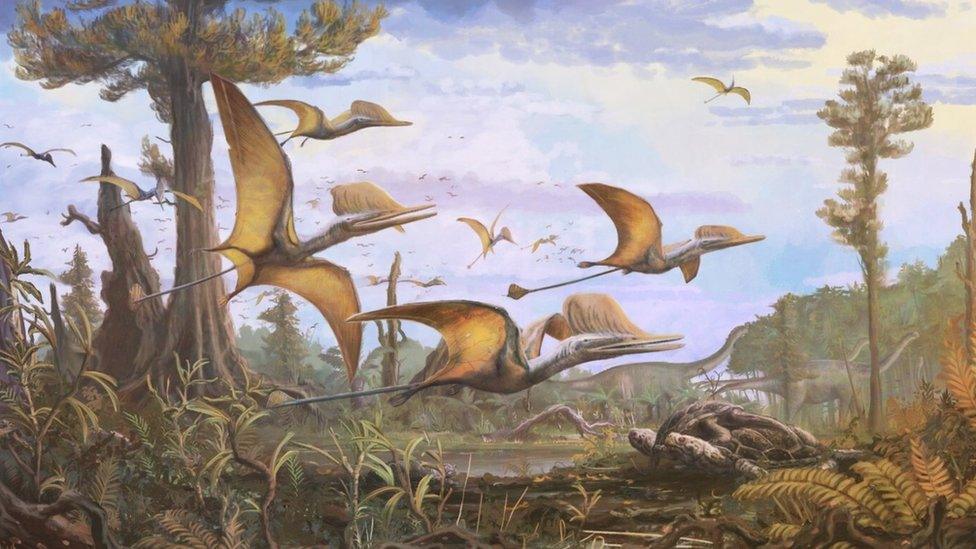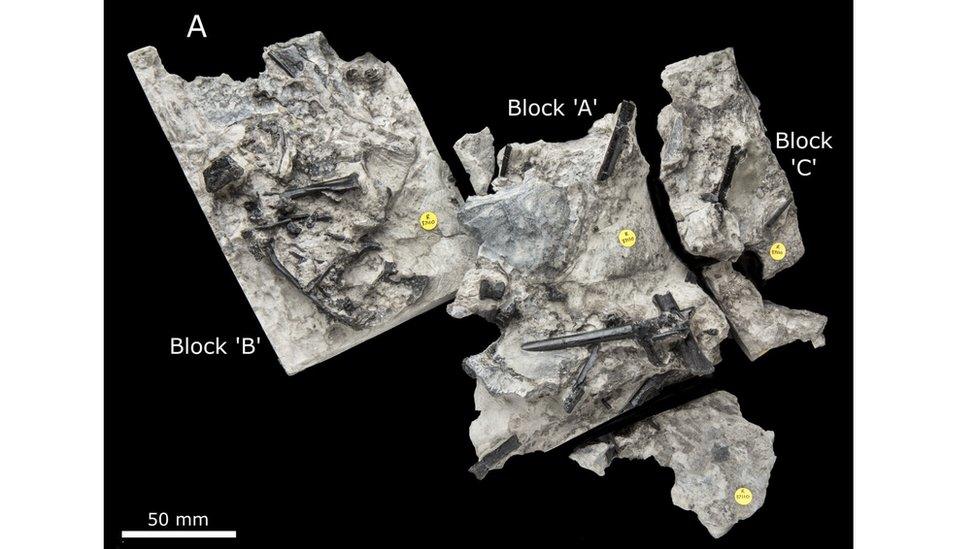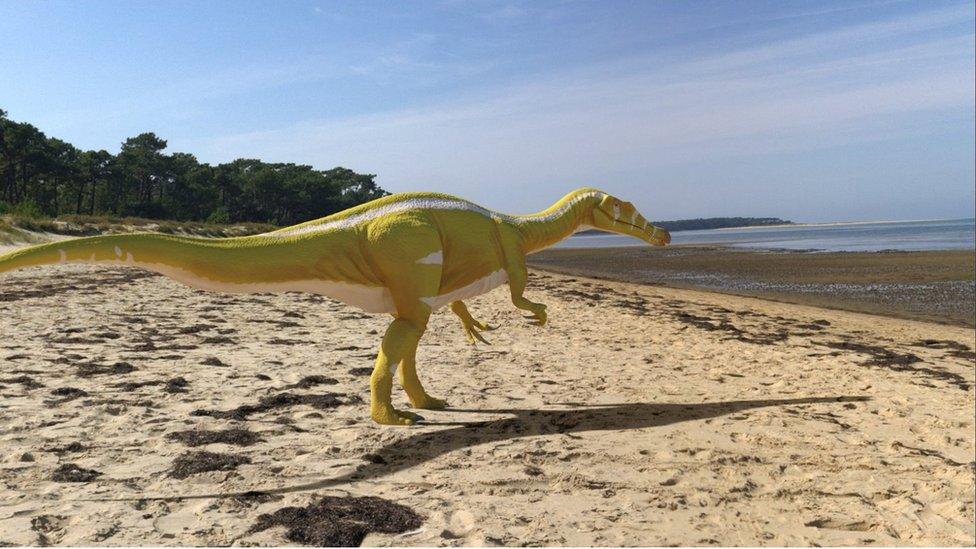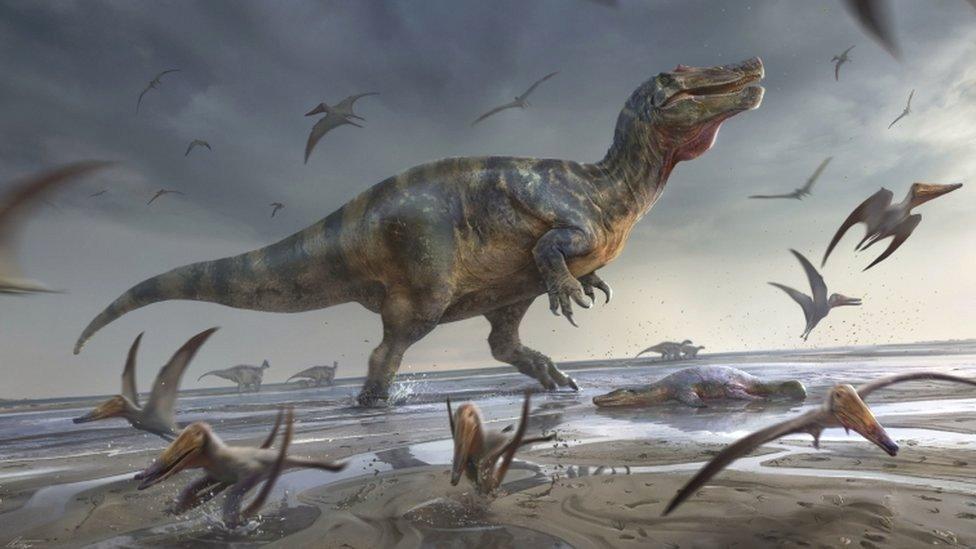New species of flying reptile found in Scotland
- Published
- comments

An artist has drawn what they believe the ceoptera would have looked like
A new species of flying reptile has been identified, 15 years after its fossil was discovered on the Isle of Skye.
The species has been named Ceoptera, and it is a pterosaur that existed over 160 million years ago.
Scientists were surprised to discover this new kind of pterosaur in Scotland, as most of their fossils have been found in China.
Experts say that the pterosaur is not a dinosaur, but a flying reptile. Pterosaur can be translated to 'winged lizard' in Ancient Greek.
The story of palaeontologist Mary Anning - told in a beautiful sand animation.
Speaking to the online news journal The Conversation, the researchers say this is "one of the most complete pterosaur fossils to be found in the UK since palaeontologist Mary Anning unearthed the first from the Dorset coast in 1828."
The delicate fossil took two years to uncover as it was trapped in very hard rock. Its wings, shoulders, legs and backbone were found, but the skull was missing.
Dr Liz Martin-Silverstone, one of the lead researchers, used a special kind of scanner similar to ones used in hospitals to examine broken bones to study the fossil more closely.
"Finding anything from that time period that's more than just a single bone is really exciting," she says.
Thanks to careful excavation and computer modelling, the researchers were able to identify the pterosaur as a new species.

Dr Liz Martin-Silverstone used a scanner to examine the fossil that was trapped in very hard rock
The Ceoptera has been named after the Isle of Skye, which is called Eilean a' Cheò (Isle of Mist) in Scottish Gaelic.
Professor Steve Brusatte, a palaeontologist, was impressed by the research published in the Journal of Vertebrate Palaeontology.
"This is the time before birds, so pterosaurs ruled the sky," he said.
"This research shows that pterosaurs were common animals in Scotland, soaring over the heads of dinosaurs."
- Published22 May 2023

- Published8 April 2019

- Published10 June 2022

